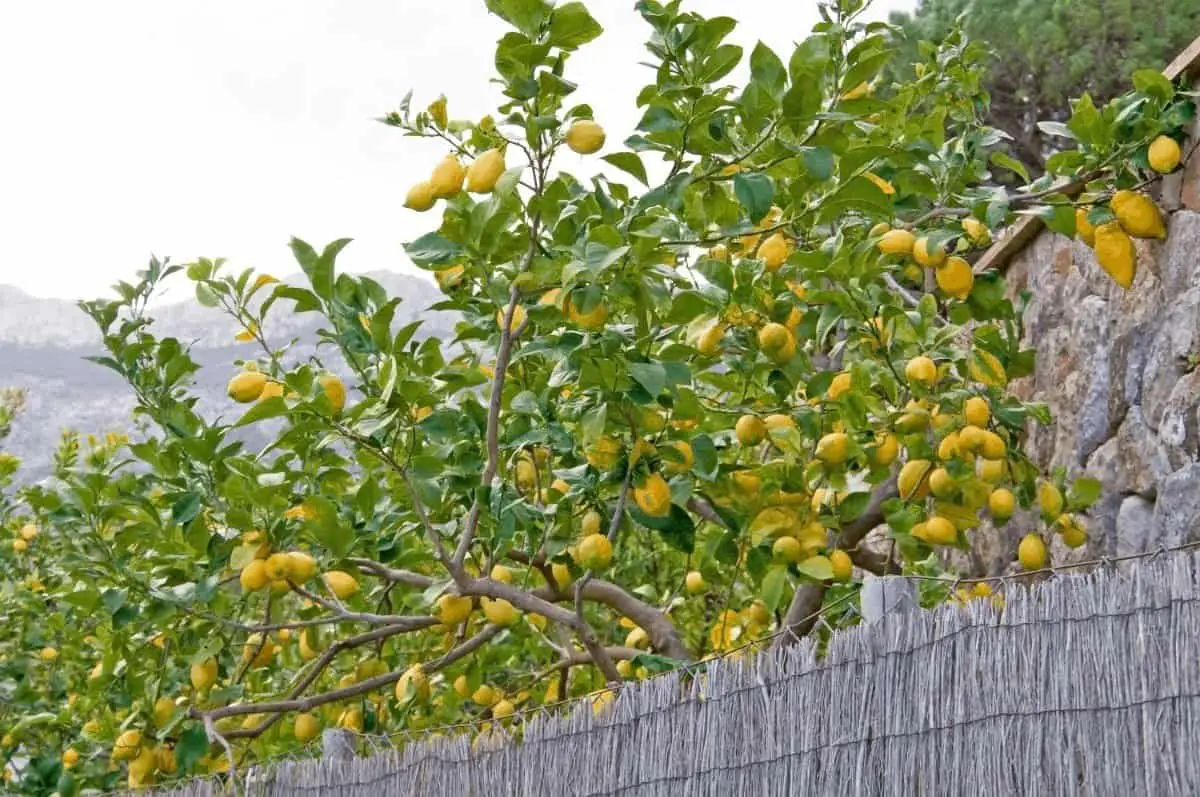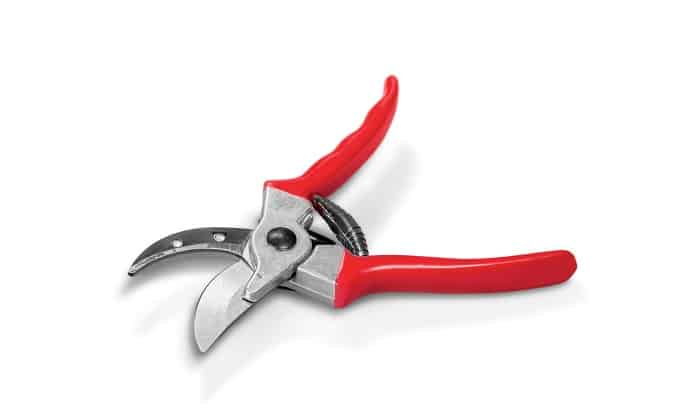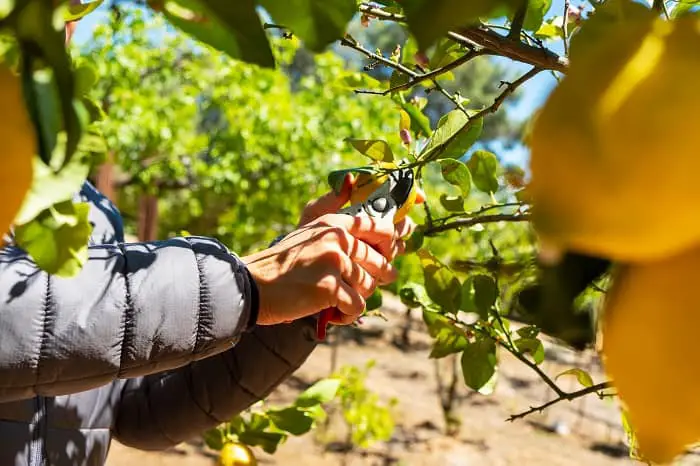Last Updated on January 18, 2023 by Griselda M.
Out of all of the fruit trees, the lemon tree is one of the simplest to care for. As long as you address its basic needs, the tree will grow and continue to provide you with delicious, citrusy fruit for years. One of the most important elements of maintenance is trimming the tree so that it can generate new growth and is no longer encumbered by the dead, dying, or diseased branches. But, the question is, how to prune a lemon tree? How do you identify a disease? And when is the best time to prune? Check out this simple how-to guide for more information.
Best Time to Prune Lemon Trees in California
If you’re wondering when is the best time to prune lemon trees in California, then the following information would be quite useful to you. Pruning your citrus tree is an important part of its care and maintenance, and the best time to do it is in the spring season. This is especially true if you live in the California region. However, you should keep in mind that knowing how to prune a lemon tree would make your job much easier.
Although citrus tree pruning is necessary, it does not mean that your lemon tree has to be cut back for fruit production. This is because these trees still produce fruit whether they are cut back regularly or not. The main aim of pruning your plant in the springtime in California is to get rid of leggy branches and dead twigs so that they acquire an even shape and get better air circulation. It is up to your to shape them into hedges or other forms to get rid of their shrublike appearance which they are accustomed to.
But, trimming your tree for ornamental purposes may decrease fruit production. It is also essential to look out for sucker growth below the graft as it can rob your plant of essential nutrients. If you find any, it should be removed to prevent problems. Warm climate areas have a larger period to prune than colder regions. Also, look out for citrus tree flowering as it is a great indicator to start the trimming process.
Best Time of Year to Prune Citrus Trees
So, what is the best time of year to prune citrus trees? The answer to this will depend on a few factors which include the USDA plant hardiness zone you’re in, the climate in your region, and the type of citrus tree you’re growing amongst others. For most regions, trimming your plant back should be done after the harvest through the winter and spring seasons. It is also essential to cut your tree back before bud break. Therefore, learning how to trim a lemon tree or other citrus plants will be advantageous.
Keep in mind that several benefits come along with pruning. But, these citrus plants may see a reduction in benefits if they are not cut back at the right time of year. Additionally, they also need to be trimmed correctly to grow their best. If done properly, you can expect your citrus tree to grow healthily with beautiful evergreen foliage and fragrant blooms, affording you bountiful yields when it’s harvesting time. USDA Zones 9 to 11 include the Northern California regions where citrus plants grow exceptionally well, enhancing the look of several landscapes.
How to Prune a Lemon Tree in a Pot?
How to prune a lemon tree in a pot has been a question that I have often been asked. To begin, having potted lemon trees indoors offers several advantages to your environment if correctly cared for. They are easy to grow and maintain and pruning or repotting them should be a part of their citrus tree care plan. This is because these plants do well when trimmed. Additionally, timeous pruning also gets rid of the development of fungus and disease which can advance if not taken care of.
Although cutting your citrus tree back is not necessary for fruit-bearing, if you leave them to grow without trimming, they will end up quite large and bushy. Nobody wants an unruly-looking pot plant whether indoors or on the porch because it can look a bit messy. To avoid your plant from growing out of hand, pruning it is recommended to control its growth.
Here’s how you prune a lemon tree:
- Firstly, check your plant for any dead leaves or flawed branches.
- Then, remove any dead or dried leaves and stems.
- New shoots should also be cut back to about half their length. Ensure that this is done with careful care and that you make the cut an inch or so above the leaf.
- Also, the branches on the inside of your lemon tree should be removed for better air circulation and light penetration.
- Remember, that the above instructions should be done regularly to maintain the shape of your citrus plant.
How to Prune Meyer Lemon Tree?
So, you want to learn how to prune a Meyer Lemon Tree? The first thing you need to know when trimming these fragrant fruit plants is that it is best to cut them back in the early fall or spring seasons. However, this will also depend on the region you live in. USDA Zones 9 through 11, which is a part of the California area, experience warmer weather conditions which extends their period for pruning. This is advantageous, however, if your area has colder weather for the most part, then you should stick to pruning in fall and spring.
Learn how to prune a lemon tree below:
- When it comes to pruning the Meyer lemon tree, you should first concentrate on the branches that are growing in a straight upward position as they are not fruit-producing stems.
- Crossed and damaged branches should thereafter be cut back.
- Ensure that each cut is done at a 45-degree angle. This should be done in an upward position as it will enhance new growth.
- Remove suckers by breaking them off the citrus tree trunk. However, if you find that the suckers have become woody, then it is best to remove them using garden shears or pruners, or sharp scissors. Ensure that you cut them in line with the trunk.
Also, Meyer lemon trees don’t need pruning for fruit-bearing purposes as ample sunlight is the main contributor to abundant yields. Although these trees thrive in direct sunlight, partial shade is also tolerated by Meyer lemon trees. But, if you have planted them indoors or outdoors, giving them six to eight hours of light daily is recommended. If natural light is not always present in your region, then we suggest that you invest in grow lights to get the best out of your Meyer lemon tree.
How To Prune A Lemon Tree: What You Will Need
The same tools required to prune your lemon tree will depend on its age and size. In general, it is recommended that gardeners avoid using saws and instead use hand pruners when working with young trees that have thin branches. If you plan on doing more in-depth pruning on an older tree, you should invest in a hand saw. Remember to have some disinfecting alcohol as well, to help prevent the transfer of potential diseases or pests.
In short, you should have the following items when trimming:
- Hand pruners or loppers
- Hand saw
- Disinfecting alcohol or 10% bleach solution
How to Prune a Lemon Tree Tutorial
Deciduous fruit trees should be trimmed and pruned regularly to foster healthy branch growth and provide more light and air to the fruit. It is a great way to start growing larger lemons but does require some work since citrus branches tend to be hardy and strong. If you adhere to the following steps, you can trim your lemon tree with no problem.
-
Choose the Right Time to Prune: When to Prune Lemon Trees
Inexperienced gardeners tend to become overzealous about their pruning activities, but there is an ideal time to start trimming branches. For lemon trees, it’s best to leave the plant alone until after the fall harvest, when crop yield won’t be affected. Choosing to prune in the fall – or in the winter in hotter climates – gives the tree time to rest before it starts to generate more lemons in the following season.
-
Prepare Your Tools
Once you have scheduled an ideal time for pruning, ready your shears, lopper, or handsaw. It’s important to rinse the blades with a form of disinfectant to stop the spread of disease or mold spores between plants. Remember to allow the blades to dry before you start pruning, as your tree won’t appreciate the alcohol. You can also disinfect the tools using a 10% bleach solution if you prefer to avoid isopropyl alcohol or a similar liquid.
-
Identify Where You Want to Trim
When pruning a lemon tree, you want to eliminate unnecessary branches that are stifling the light and aeration of the citrus harvest. Focus on thinner branches at first, and then work your way up to the bigger ones. If there are any signs of disease or damage, remove these growths to stop the spread of problematic bacteria or mold.
There are several parts of the branch that you want to cut to promote healthy growth. In general, it is a good idea to remove root suckers, broken branches, water shoots, and any branches that rub against or cross one another. These are unnecessary and could be impeding future growth, making them essential elements to eliminate.
-
Start Pruning
You need to trim your lemon tree a certain way to avoid wounding the sensitive bark. Never cut flush to the trunk, and always make incisions with the blade pointed toward the tree. To start trimming, begin with angled cuts that are 10-12 in. away from the central trunk. Eliminate smaller branches before working your way up to big ones. You want to cut so the branch collar is preserved, as this “branch defense zone” will help the tree recover from pruning and grow a hard protective coating over freshly trimmed areas.
-
Use the Three Cut System
The best way to trim a lemon tree is by using a system that relies on three different types of cuts to remove branches while keeping the plant healthy. The first cut for larger branches is the same as the pruning system for smaller ones, which is, to begin with, angled cuts around 10-12 in. away from the trunk. You follow this with an undercut on the other side of the branch to weaken it and help remove it from the tree. Afterward, move a few inches above the branch and slice above, severing it from the tree.
-
Continue Until Satisfied
The exact number of branches you trim will depend on your personal preference and the overall health of the tree. Professional gardeners recommend removing no more than a third of the growth. Taking too many branches can stunt the next year’s lemon harvest and leave you without any citrus for your recipes.
-
Adjust for Cuttings
If you are trimming the lemon tree in the hope of getting cuttings for propagation, select only healthy branches that are between half an inch and a full inch thick. Avoid choosing ones that are too thick or seem unhealthy, as they will not grow when transplanted into new soil and can dry out and die rapidly.
How To Prune A Lemon Tree: Tips and Tricks
There aren’t many tips and tricks to cutting citrus trees as the process is quite straightforward. However, if you have never pruned a lemon tree before, consider doing regular maintenance throughout the year to reduce how much work you have at the end of the fall season. Always remember to remove dead growth whenever possible, and remember to top new trees so the fruit receives enough sunlight to remain healthy and strong.
Conclusion
Trimming a lemon tree does not need to be a complicated process. Although some of the terms sound complex, all you need to do is eliminate unnecessary growth and provide space for the lemons to receive the right amount of sunlight and oxygen. If you are still not satisfied with your results in the upcoming year, consider trimming a little more and checking on the health of the tree. To do this successfully, you should take heed of the information in this article and learn how to prune a lemon tree.
FAQs
What are the common mistakes when pruning a lemon tree?
Here we will discuss some of the common mistakes people make when pruning mature lemon trees.
1) Pruning in the wrong season:
Some people think that because a lemon tree is mature, you can start pruning them at any time of year. However, this is not true. In fact, it's best to wait until late winter or early spring when there's a chance that significant new growth will have occurred and there might be fruit on the tree.
2) Cutting off too many branches:
When you're correcting an overgrown citrus tree, one of your goals should be to create asymmetry within the canopy.
How do you care for a lemon tree?
They need special care and attention in order to grow healthy and produce fruit.
Lemon trees are planted in pots, with a hole in the bottom of the pot filled with lava before planting. This provides drainage and allows excess water to evaporate from the soil. Lemon plants need lots of sunlight, which should be blocked by placing a plastic sheet over them during winter months.
Do lemon trees need a lot of sun?
To get the most out of your lemon tree, make sure it gets enough exposure to sunlight.
Lemon trees need a lot of sun to grow and thrive, but not too much. If you are looking for fruit, you should make sure that your lemon tree is in full sun at least half the day.
Should I prune my potted lemon tree?
This is an important question that many homeowners are asking themselves these days about their potted lemon trees. If you have a potted lemon tree, you will soon be wondering if it's time to trim the ends or cut back on watering.
Lemon trees thrive in warm and humid conditions which makes them natural to be potted and kept indoors. However, once they are grown indoors, they become less beautiful than when they are grown outside. So, it is natural that you would want to prune your lemon tree at some point.
However, Lemon trees unlike other trees do not need to be potted or cut down completely because they produce their own compost pile as they grow and can live on the scraps. They also produce fruit year round which helps improve their nutritional value and natural vitamin C content.
Why is my lemon tree leaves turning yellow?
The lemon tree is a fruit-bearing tree belonging to the citron family that can grow in both temperate and tropical climates. Its delicate yellow leaves are wide and somewhat heart-shaped, they are often used as a food coloring.
The leaves of the lemon tree turn yellow when they get exposed to direct sunlight or if it has been too wet for a long time. This is a natural process and the leaves will eventually drop from the tree, this is called "dieback".
The leaves could be also turning yellow because of the following reasons:
The tree has been pruned too much.
There might be a lack of direct sunlight on the tree, which is why it is losing its chlorophyll.
The tree may have been exposed to too much water, or there has been too much rain.
Tony Manhart is a passionate gardener who has been tending to gardens for over 20 years. He takes pride in creating beautiful outdoor spaces with plants, trees, and shrubs that can thrive in any environment. He loves to share his knowledge with others and has taught classes on gardening basics and advanced techniques. He is committed to sustainability, using natural and organic methods to create and maintain gardens. He also works with local organizations to create green spaces for communities. When he’s not gardening, Tony enjoys hiking, reading, and spending time with his family.



